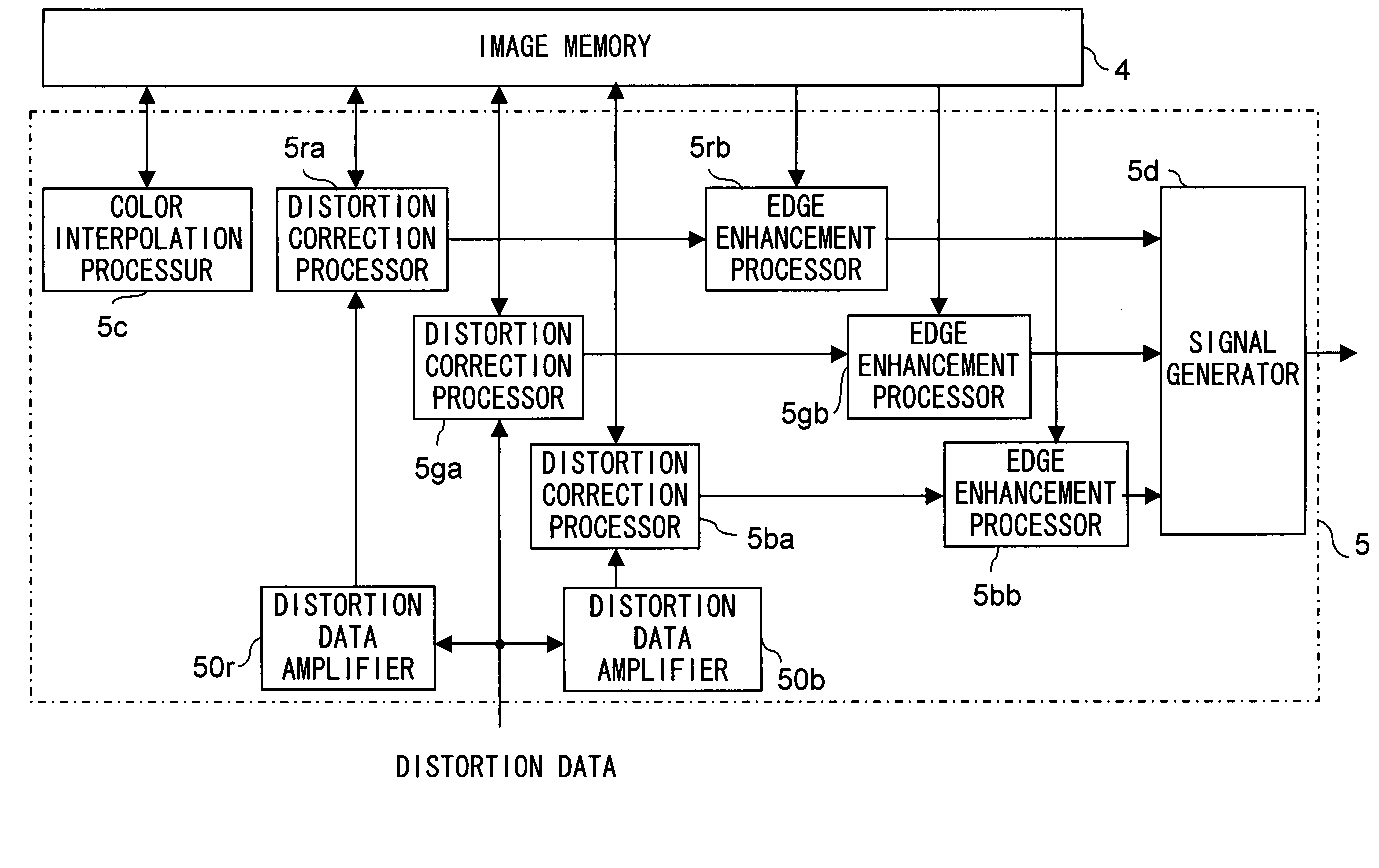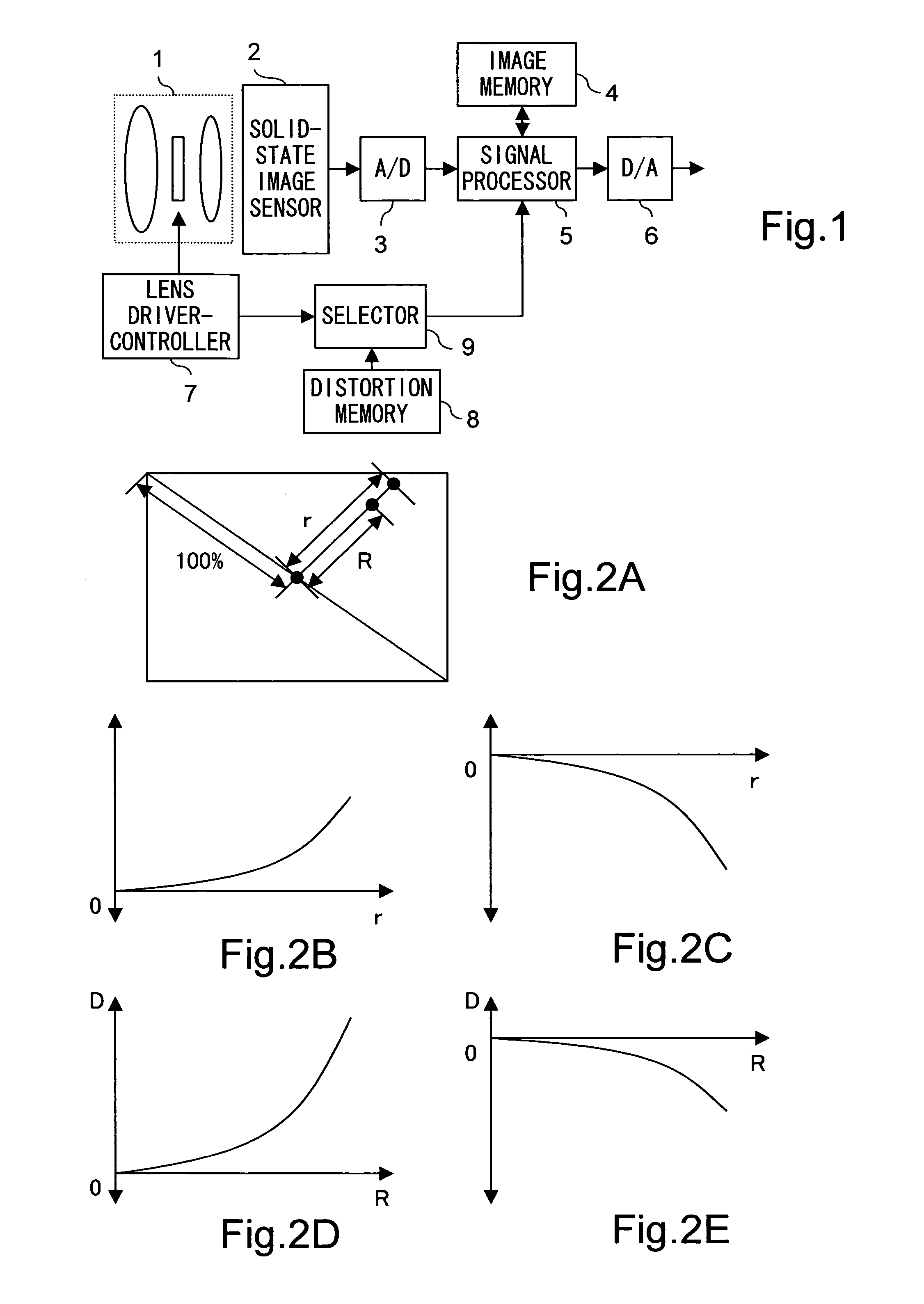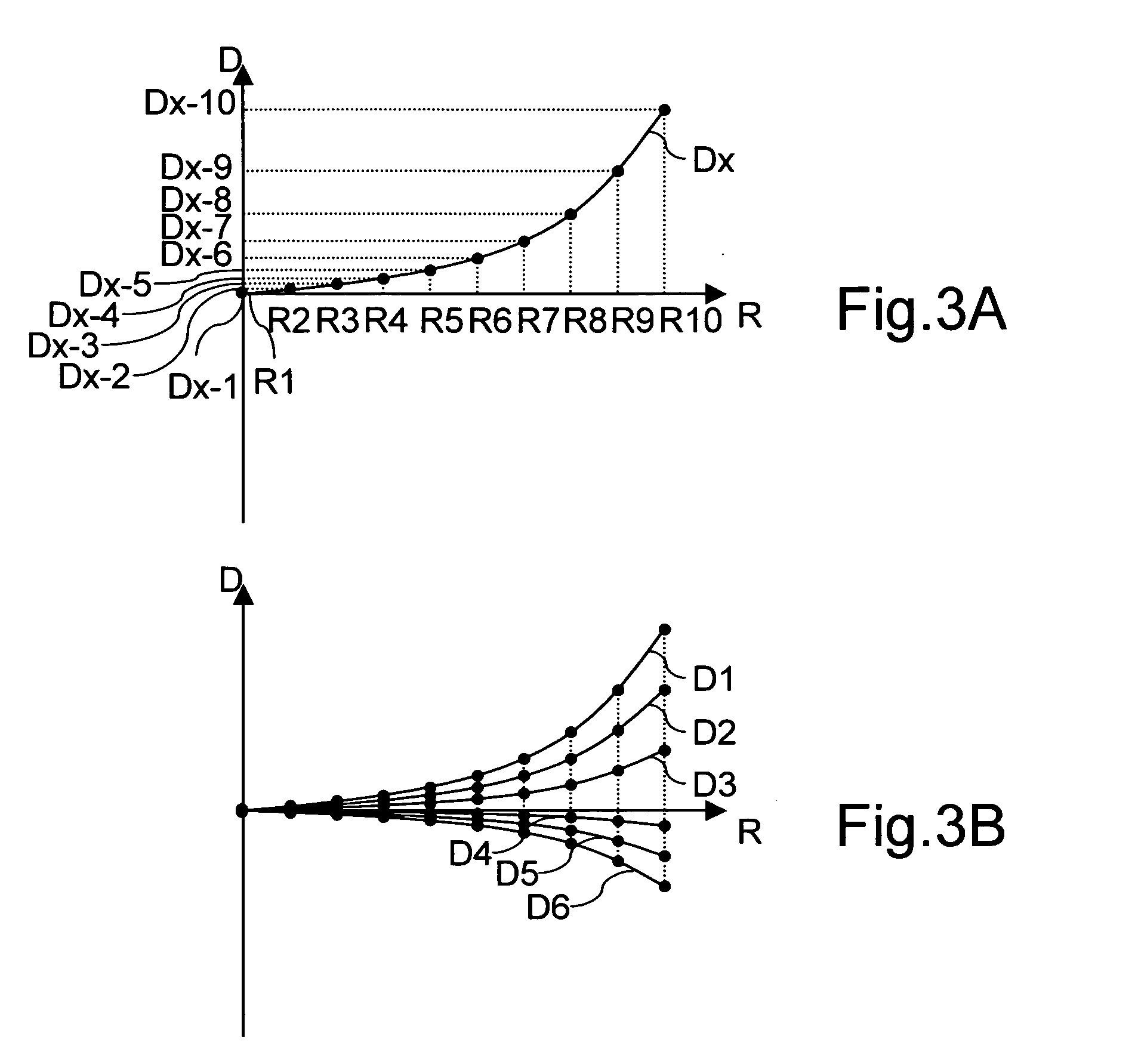Distortion correction device and image sensing device provided therewith
a technology of distortion correction and image sensing, which is applied in image enhancement, instruments, television systems, etc., can solve the problems of affecting the image position of the solid-state image sensor, requiring a large-capacity memory, and cannot deal with all types of distortion, so as to reduce the amount of data, reduce the amount of calculation, and achieve high accuracy. approximation
- Summary
- Abstract
- Description
- Claims
- Application Information
AI Technical Summary
Benefits of technology
Problems solved by technology
Method used
Image
Examples
first embodiment
[0032] A first embodiment of the present invention will be described below with reference to the drawings. FIG. 1 is a block diagram showing the internal configuration of the image sensing device of this embodiment. FIG. 4 is a block diagram showing the internal configuration of the signal processor provided in the image sensing device of this embodiment.
[0033] The image sensing device shown in FIG. 1 is provided with: an optical system 1 that receives the light from a subject and that is composed of a plurality of lenses; a solid-state image sensor 2, such as a CCD or CMOS sensor, that receives the light incident thereon through the optical system 1 and that outputs an electrical signal commensurate with the amount of incident light; an A / D converter 3 that converts the image signal outputted from the solid-state image sensor 2 into a digital signal; an image memory 4 that temporarily stores the image signal; a signal processor 5 that reads out the image signal stored in the image...
second embodiment
[0059] A second embodiment of the present invention will be described below with reference to the drawings. The image sensing device of this embodiment is, as in the first embodiment, configured as shown in FIG. 1. FIG. 8 is a block diagram showing the internal configuration of the signal processor provided in the image sensing device of this embodiment. The image sensing device of this embodiment differs from the image sensing device of the first embodiment in that the signal processor 5 performs not only distortion correction but also edge enhancement. Thus, in this embodiment, except the signal processor 5, all the circuit blocks are configured in the same manners and operate in the same manners as in the first embodiment; therefore, for their explanations, those given earlier in connection with the first embodiment are to be referred to, and no detailed explanations will be repeated.
[0060] In the image sensing device of this embodiment, as shown in FIG. 8, the signal processor ...
third embodiment
[0074] A third embodiment of the present invention will be described below with reference to the drawings. The image sensing device of this embodiment is, as in the first embodiment, configured as shown in FIG. 1. FIG. 12 is a block diagram showing the internal configuration of the signal processor provided in the image sensing device of this embodiment. The image sensing device of this embodiment differs from the image sensing device of the second embodiment in that the signal processor 5 performs not only distortion correction and edge enhancement but also chromatic aberration correction. Thus, in this embodiment, except the signal processor 5, all the circuit blocks are configured in the same manners and operate in the same manners as in the first and second embodiments; therefore, for their explanations, those given earlier in connection with the first and second embodiments are to be referred to, and no detailed explanations will be repeated.
[0075] In the image sensing device ...
PUM
 Login to View More
Login to View More Abstract
Description
Claims
Application Information
 Login to View More
Login to View More - Generate Ideas
- Intellectual Property
- Life Sciences
- Materials
- Tech Scout
- Unparalleled Data Quality
- Higher Quality Content
- 60% Fewer Hallucinations
Browse by: Latest US Patents, China's latest patents, Technical Efficacy Thesaurus, Application Domain, Technology Topic, Popular Technical Reports.
© 2025 PatSnap. All rights reserved.Legal|Privacy policy|Modern Slavery Act Transparency Statement|Sitemap|About US| Contact US: help@patsnap.com



